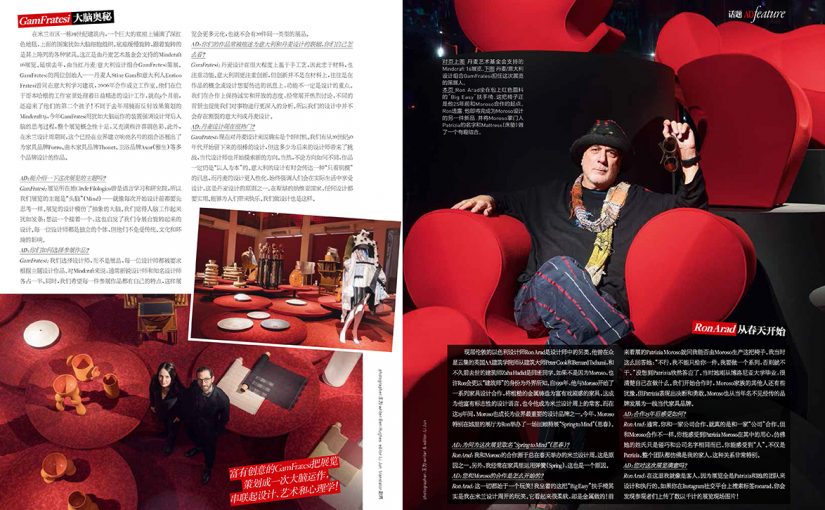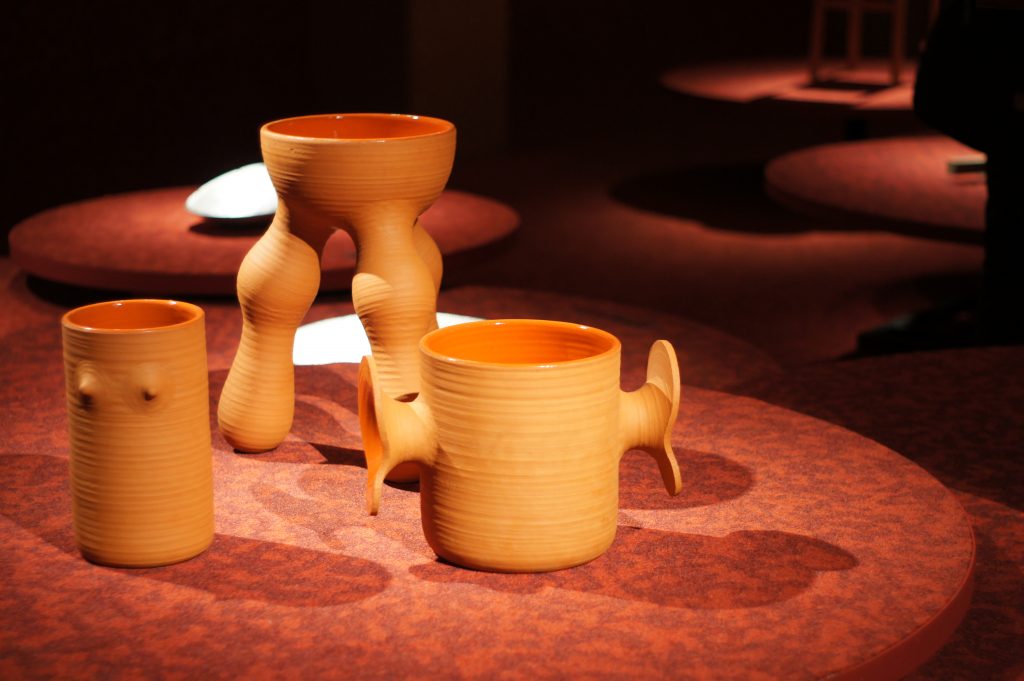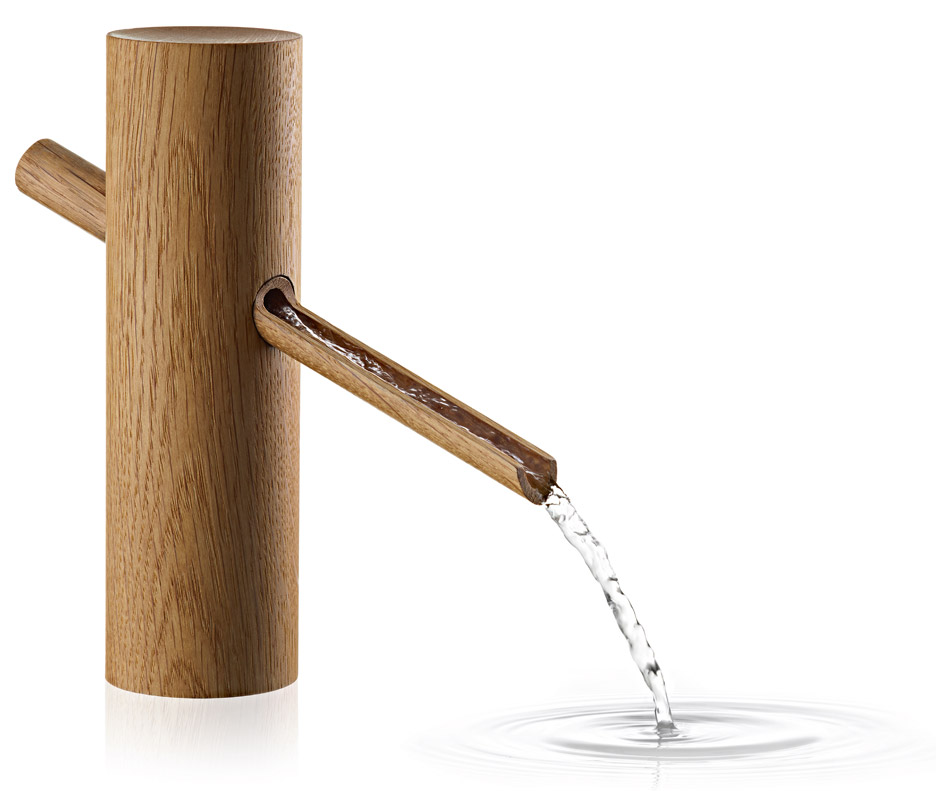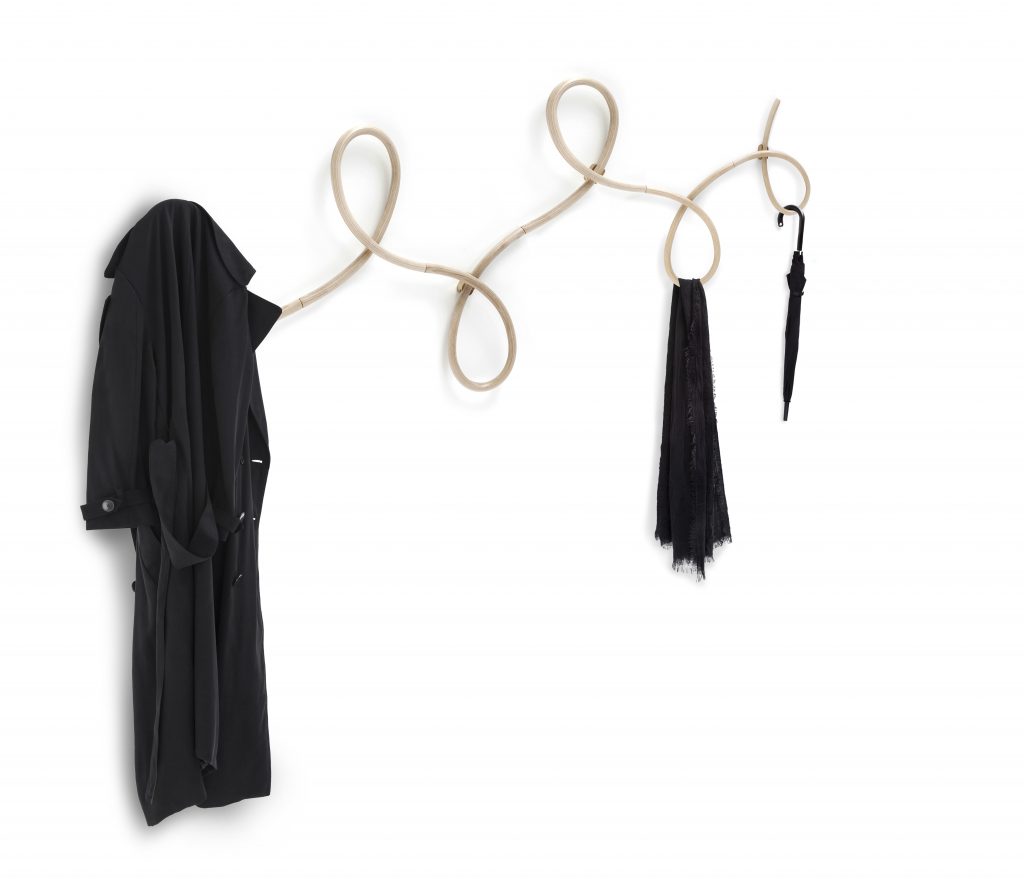Interview at Mindcraft Exhibition, Circle Filologico, Milan
This piece was published by AD China in July 2016. This is the English version. Stine and Enrico were charming to talk to. I found the exhibition far more experiential than informative (not a bad thing) and also hard to get my head round its name, “Mindcraft.” As I was writing it up, my spellcheck kept correcting it to minecraft, with which I am much more familiar.
The Danish-Italian design duo GamFratesi have rapidly established themselves as one of the most exciting names in contemporary design. Stine Gam (SG) and Enrico Fratesi (EF) met as classmates while studying architecture in Italy and founded their studio just two years later in 2006. From their base in Copenhagen the couple manage to balance an increasingly busy domestic life (their second child was born just three months ago) with a professional life that seems to gain momentum each year. At this year’s Milan design fair, they presented work for (among others) Italian furniture brand Porro, German bentwood furniture manufacturer Thonet and bathroom accessories company Axor. As well as this, they also curated the “Mindcraft” show for the second year running. An annual event since 2008, Mindcraft is a Danish Arts Foundation funded showcase of contemporary craft incorporating both familiar areas such as furniture textiles and ceramics as well as less obviously Scandinavian disciplines such as digital design, fashion and even musical composition.
The presentation breaks from the tradition of most craft exhibitions by asking participants to work on a specified theme and not just focusing on finished products. Many of the exhibits are research-based: experiments and demonstrations of new approaches to a material or process. And rather than a white cube installation, the show itself is highly conceptual and filled with drama. Housed in the historic library-like surroundings of the Circle Filologico, the works are exhibited on rotating platforms in a room completely engulfed in a rich burgundy carpet material.
BH: How would you describe the theme of this year’s show?
EF: This location is the Philologic institute which goes back to the origins of language and study, so the theme we chose is the mind — what is in the mind before starting work on a material. The installation resembles a large abstracted brain and when we start to study the mind of course phrenology came out. Of course all of the theory was somehow absurd and totally wrong but in some ways it was also very naive and also the basis for contemporary psychology. We had this idea that things in the head are somehow working like clockwork: thoughts are working one way and connecting to the next and the next and that was the idea about this rotation. Each designer is really individual but they are also connected by the heritage and the culture of the environment.
BH: And how did you choose the designers for the show?
EF: We select the designer rather than the work as each creates a new work for the exhibition.
SG: It is typical for the Mindcraft exhibition that it is 50/50 of established and less well-known designers. In addition we also looked for less overlap in the work to create a more heterogenic presentation. That way we wouldn’t end up with 20 chairs for example.BH: Your work is sometimes described in terms of a marriage of the very strong Italian and Danish design traditions. Do you feel this is accurate?
SG: Danish design culture is very much based on craftsmanship so in a way it is very much about the honesty in the materials and also about the function. Whereas in Italy there is this sense of trying to push the innovation, but it doesn’t mean innovation in the material but it can be in the concept behind and the message you want to send so the function is not always being the main focus.
EF: We are very intimate with each other because we are a couple and we can be very honest and open. So the contrast and the discussion about the design during the project is very active, but also very open. So it is not that there is a part that is Italian and a part that is Danish but naturally became a fusion of the two.
SG: Also it forces you all the time to rethink what is normal, because it may not be normal for the other person and then during the process you are are forced to analyse things a little deeper.BH: Could it also be that this combination of approaches is sometime conflicting?
EF: Absolutely — we try to conduct the discussion in a constructive way, but of course there are many things not just in work but also in daily life which is for me natural and for Stine not natural and it is difficult to explain why — and then we try to analyse and better understand how can we find a compromise or can we get something good out of that. And if this discussion can bring an interesting analysis at the end then it is a positive discussion. Of course I definitely learn a lot from Stine’s culture and definitely have been inspired every day by seeing things in a different way, but it is not an easy task because there are many compromises and complexity in staying together and living in one country.
SG: I think maybe it is more the method that is different because of who we are. Because maybe in a way we actually agree on the result in the end but there is a very different way to arrive to that.BH: Is your family life more Danish or Italian?
EF: Probably both.
SG: We have been living in both countries and really you end up feeling a little bit of an alien in each because you never really fit into the rhythm.
EF: And also at one point when you really open your mind it becomes difficult to return and live in the same way as before without thinking. You are continuously processing this. Even if you see your old friends and you go to your home town it is no longer your home town. Somehow you see things differently. What was natural before is no longer natural to you any more. It is both fascinating and complicated because in a way you can never have this peace that you had before. Also you are always anxious to go back if you have been away for a long period. And you have a notion that is so romantic and then you arrive back and you get so disappointed. I lived a town called Pesaro, close to Riminy, when I was young which is also where the movie director Fellini grew up. Many of his films deal with his childhood in this area, but when he had to depict the location, he couldn’t bring himself to film there — he had to create a fictionalised Riminy because the romantic notion he had built up had completely disappeared. And I also feel this, not of course so heavily, but at the same time it is as though there is something missing. But it is also true that we are both very nostalgic.Why do you think Danish design is “Hot” right now?
SG: It is a very good moment for Danish design. We have this heritage from the 1950’s were there was amazing design but this also made it more difficult for the next generation. Of course the heritage is always there, but it seems that the current generation of designers have found a way to propose a new direction. There is still the minimalistic or functional but its not always crafted.
EF: Maybe one connection is that it is always a design for people. For example Italian design can sometimes be: “look but don’t touch” OK? Danish design tends to be more humanistic. In the last 50 years it was super crafted with an amazing technique and now sometimes it is more basic but the focus is always that people should enjoy this in daily life and this remains one of the values of Danish design. In Scandinavia things are there to be used and to be enjoyed everyday. And this is part of it — to be surrounded by things that are more human.
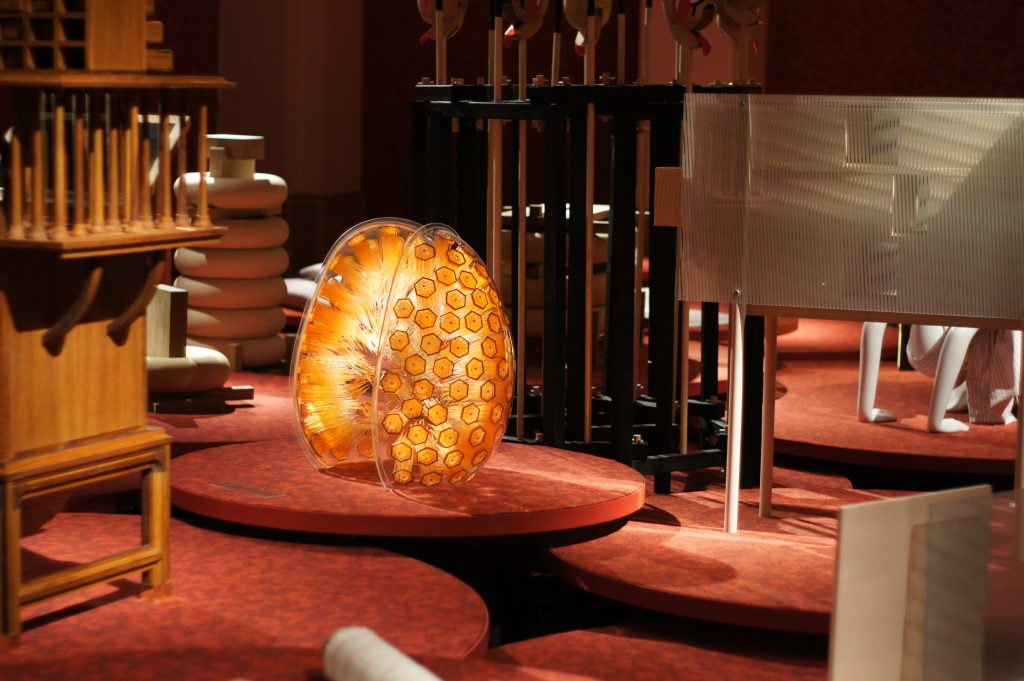
Mindcraft Installation.
The walls and floor are covered in a specially commissioned design from Ege Carpets.
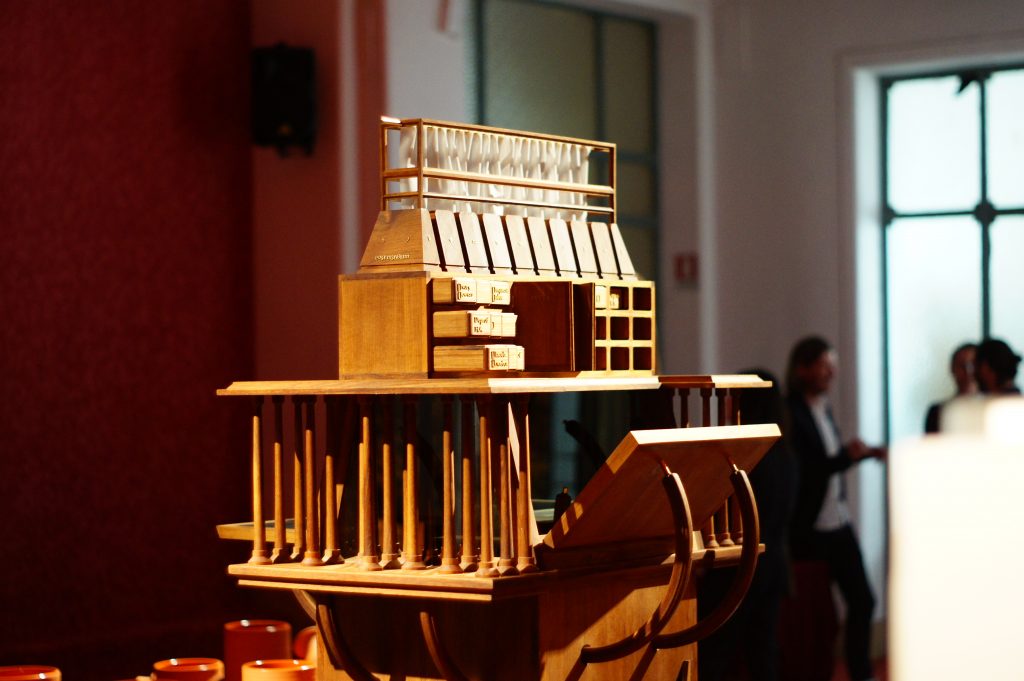
“The Office” desk by Ben and Sebastian
A desk in teak, brass, rubber, leather and felt. This piece, with its multiple drawers, compartments and stage-like platform is also a metaphor of the mind.
“Primal Pottery Project” by Ole Jensen
Ole Jensen is well known for producing beautifully crafted products and accessories. This project takes the exhibition theme of the body and projects different parts onto large utilitarian vessels.
“Zen” Bathroom tap in oak for Axor. Part of the Water Dream project that uses interchangeable taps on a modular base.
“Walz” modular coat hangar for Gebruder Thonet. Inspired by the lightness of the steps of the oldest, best-known ballroom dance. The repeated sinuous rotations of the dance are the inspiration behind the concept and shape of the piece.
